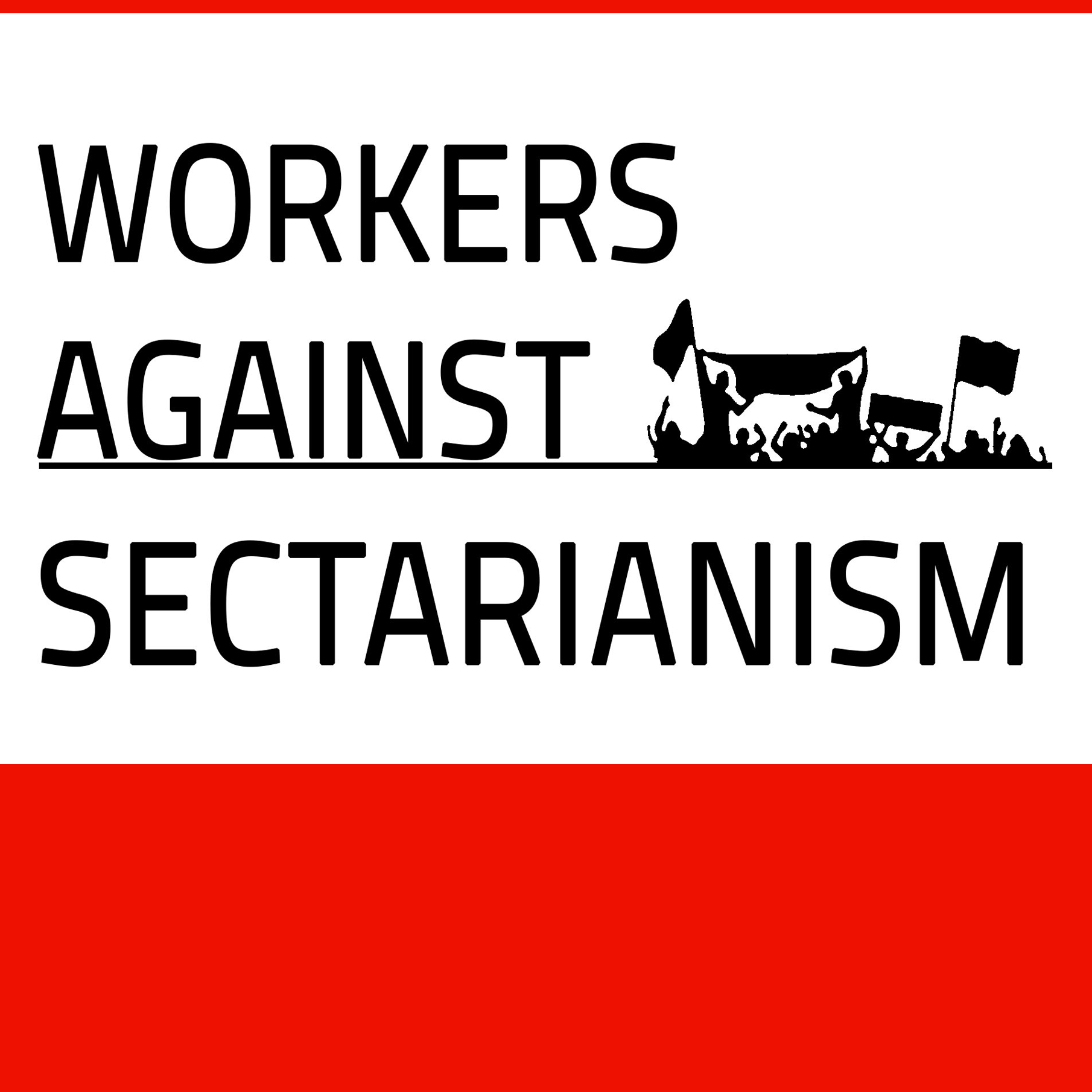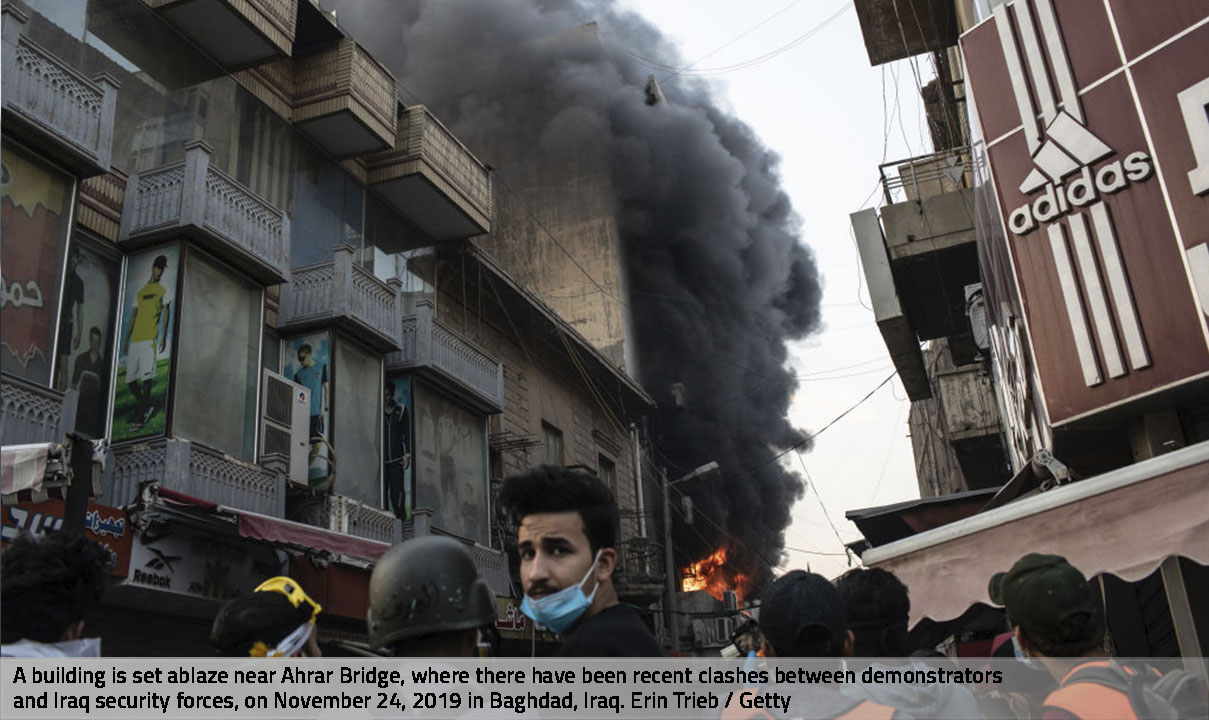The protest movement convulsing Iraq is a heroic revolt powered by unemployed, precarious, and informal workers. Their aim is to overturn the entire political system, which has produced nothing but violence and poverty for the vast majority of Iraqis.
BY JANAN ALJABIRI
On September 22, a small group of civil activists in Iraq called for a protest on October 1. They had no idea the kind of rebellion they would spark.
The call echoed through various social media platforms, in part inspired by Egyptian businessman Mohamed Ali’s plea for an uprising against Abdel Fattah al-Sisi’s corrupt dictatorship. The activists’ call was seconded by the Al-Hikma Islamic Current, an Islamic Shia political organization, which insisted on the need for protests against “the government’s bad performance.”
The call echoed through various social media platforms, in part inspired by Egyptian businessman Mohamed Ali’s plea for an uprising against Abdel Fattah al-Sisi’s corrupt dictatorship. The activists’ call was seconded by the Al-Hikma Islamic Current, an Islamic Shia political organization, which insisted on the need for protests against “the government’s bad performance.”
The established parties responded discordantly. The Ba’athists announced they would return to power by seizing the opportunity of the impending protest. Maverick cleric Muqtada al-Sadr commented that the end of the current government was near. The Worker-Communist Party of Iraq (WCPI) warned the masses against participating in what it saw as protests organized by the Islamic parties.
On the eve of October 1, confusion abounded as to who exactly was behind the call.
The protest was to occur on a Tuesday at 10 a.m. — a deliberate choice to both differentiate the action from Friday gatherings organized by the Sadrist current and to disrupt a working day (Friday is closing day in Iraq). The first hours of the demonstration in Baghdad’s Tahrir Square were quiet, with a few hundred protesters assembling. Most were members of the tribe of the popular ex-commander of the counterterrorism forces, Gen. Abdul-Wahab al-Saadi, who were angered by the government’s decision to demote him.
Soon, however, other protesters filled the square. By midday, the government had started using violence against the demonstrators, first in the form of water cannons and tear gas, later with live ammunition. The same day, demonstrations burst out in other parts of Southern Iraq. Thousands of people, appalled by the unprecedented use of violence against demonstrators, took to the streets in a raft of cities: Nasiriyah, Misan, Diwaniyah, Babel, Karbala, and Najaf.
Iran-sponsored Arab Shia militias joined government security forces in shooting indiscriminately at protesters. Death squads faced down unarmed demonstrators, killing scores day after day. The government imposed a blackout on social media and internet services and announced curfews in several cities. Undeterred, protesters moved the demonstrations to the popular districts, setting barricades and burning tires in order to prevent the militias and government forces from entering their neighborhoods. The battle continued. One Iran-sponsored militia, Asa’ib Ahl al-Haq, controlled the main access to Tahrir Square, the central plaza in Baghdad, and fired on protesters attempting to reach the square. A new militia supported by Iran, Saraya al-Khorasani, attacked the al-Ghazaliya district in Baghdad, bombing a hospital and murdering people in their houses.
On October 6, dozens of women and children were killed in Sadr City, the heavily impoverished district of Baghdad. Other cities were also turned into battlefields. Protesters torched Islamic Shia party offices in Nasiriyah and Misan, and proclaimed Nasiriyah a city free of ruling parties. Rather than deterring the protesters, the government’s violent repression — along with its accusations of foreign influence — brought more people into the streets. Protestors decided that a new wave of demonstrations would begin on October 25, to vindicate the victims………………………………….
Read more from the source: Jacobin

 Nominating a new parliament speaker without any immediate solutions since last year, 2023.
Nominating a new parliament speaker without any immediate solutions since last year, 2023. On the memory of the genocide that the marshes were subjected to, who are the Ahwarians?
On the memory of the genocide that the marshes were subjected to, who are the Ahwarians? Muqtada al-Sadr’s militia attack the Green Zone in Baghdad
Muqtada al-Sadr’s militia attack the Green Zone in Baghdad The environmental activist Jassim al-Asadi, who seeks to protect the marshes in Iraq, has been kidnapped on 1/2/2023.wed
The environmental activist Jassim al-Asadi, who seeks to protect the marshes in Iraq, has been kidnapped on 1/2/2023.wed Working women in Iraq – the way to work is not safe
Working women in Iraq – the way to work is not safe Urgent: Total chaos inside Iraq, imposing a curfew, general closure of all government institutions, in addition to leaving most of the embassies of foreign countries in Baghdad.
Urgent: Total chaos inside Iraq, imposing a curfew, general closure of all government institutions, in addition to leaving most of the embassies of foreign countries in Baghdad.














